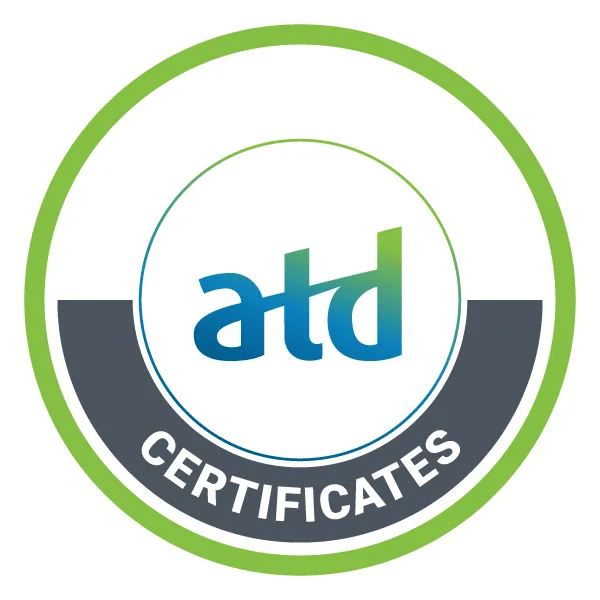Filming & Editing Training Videos Certificate
Gain the confidence to shoot and edit your own training videos.
Produce professional training videos quickly using just a smartphone and generic video editor.
Live Online
Private training
Filming & Editing Training Videos Certificate: Course Info
This interactive program puts you in the role of videographer, empowering you to create quality media for your learning programs—on your own, quickly, and cost-effectively. The focus of this program is on video production, both filming and editing employee training videos, using only a smartphone and freely available editing software.
Create Engaging Training Videos: Hands-On Techniques for Professional Results
You will actively practice creating professional quality film footage throughout this hands-on program―mastering how to balance quality and speed. Learn to frame and capture crisp footage, make it flow, and edit content into a polished training video that maximizes learner engagement. By using professional best practices and trusted techniques, your training videos will be clearer, smoother, and more refined.
This program focuses on the process of creating and producing engaging training videos. If you are interested in designing instructional videos, consider enrolling in the Designing Training Videos Certificate. These two programs are complementary and, in combination, cover the complete process for developing all types of training videos.
Research-Backed Content: This certificate is aligned with the Learning Sciences Capability and Technology Application Capability of the Talent Development Capability Model™. The course content reflects key concepts from the TDBok™ Guide, Talent Development Body of Knowledge, second edition, the definitive resource for the talent development profession.


Format
Live Online
Private Training

Roles
Learning Technologist, Instructional Designer, Trainer/Facilitator

Capability Areas
Learning Sciences, Technology Application

Level
Capable

Language(s)
English

Credits
APTD 14
CPTD 14
CEU 1.4
HRCI 14
PDC 14

Recognition
ATD Certificate of Completion, Digital Badge
FAQs
Course Topics
Dates & Locations
Time Zone: UTC
Credits & Recognition
 ATD Certificate of Completion
ATD Certificate of Completion Digital Badge
Digital Badge 14 Learning Hours
14 Learning Hours 1.4 CEUs
1.4 CEUs| Additional Credits | Type | Credits | |
|---|---|---|---|
| APTD Credential | Professional Development Hours/Recertification Points | 14 | More Info |
| CPTD Credential | Professional Development Hours/Recertification Points | 14 | More Info |
| HR Certification Institute® | Recertification Credit Hours | 14 | More Info |
| Society for Human Resource Management | Professional Development Credits (PDCs) | 14 | More Info |
Facilitators
Jonathan Halls
Jonathan Halls is an award-winning author & was recently named by GFEL in the top 100 Visionaries for Education in 2021. His books include Confessions of a Corporate Trainer:...
Matthew Pierce
Matthew Pierce is a video creator, podcast host, instructional designer, and loves to share his knowledge, experience, and expertise. As learning and video ambassador for TechSmith, he hosts The Visual...
WHAT OUR PARTICIPANTS ARE SAYING
Testimonials
Have a Group to Train?
Want to purchase multiple seats or schedule a dedicated team training experience tailored to your organization’s needs? Fill out the form below to schedule a call with an ATD Enterprise Solutions Account Executive to learn more.
